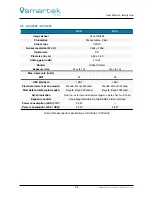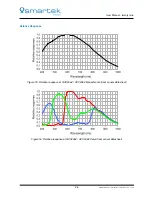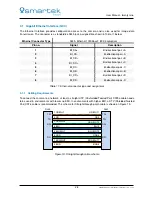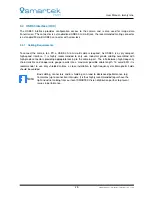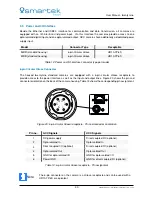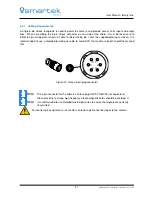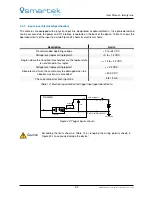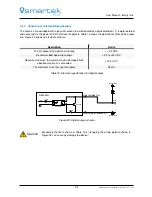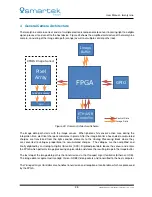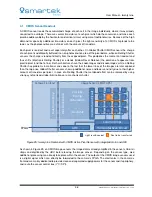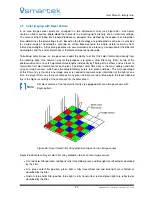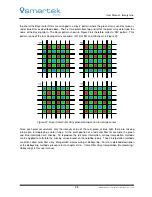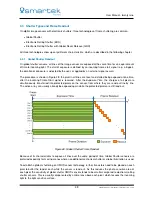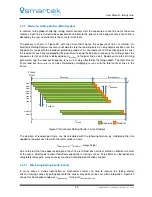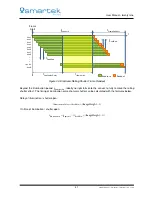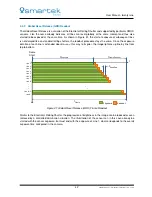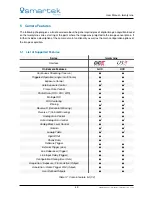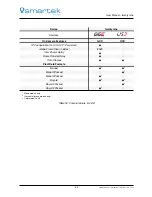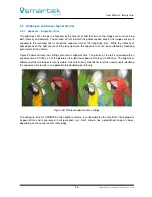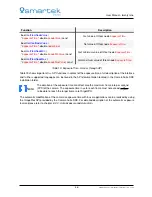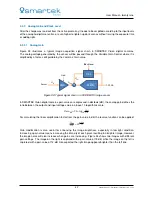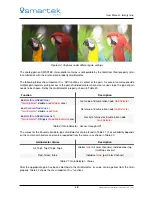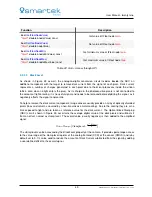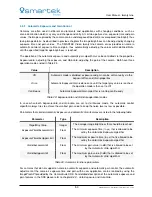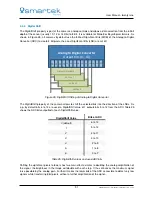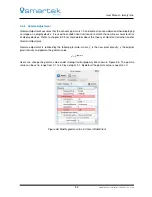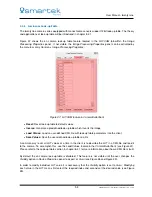
User Manual - twentynine
4.3
Shutter Types and Frame Readout
On digital image sensors with electronic shutters, three technologies of frame shuttering are common:
•
Global Shutter
•
Electronic Rolling Shutter (ERS)
•
Electronic Rolling Shutter with Global Reset Release (GRR)
All three technologies show up very different characteristics, which are described in the following chapter.
4.3.1
Global Shutter Readout
On global shutter sensors, all lines of the image sensor are exposed at the same time for an equal amount
of time to incoming light. The start of exposure is defined by an incoming frame start signal (e.g. a trigger),
the duration of exposure is adjusted by the user, or applied by an external signal as well.
The procedure is shown in Figure 28; the pixel in all lines are reset and started being exposed at one time,
after the incoming
Frame Start
signal is received. After the
Exposure Time
, the charges of all pixel are
simultaneously transferred into protected pixels on the sensor, from where they are read out line by line.
The active array can usually already be exposed again while the protected pixels are still read out.
Figure 28: Global Shutter Frame Readout
Because of its characteristics to expose all lines over the same period of time, Global Shutter sensors are
preferred especially for moving scenes where no additional mechanical shutter or strobe illumination is used.
To establish a global shuttering on CMOS sensor technology, further transistors need to be placed on each
pixel to buffer the load of each while the sensor is read out. As this reduces the photo sensitive area of
each pixel, the sensitivity of global shutter CMOS sensors tends to be smaller compared to electronic rolling
shutter sensors. This is usually compensated by a micro lens above each pixel, which focuses the incoming
light to the light sensitive surface.
39
SMARTEK Vision | User Manual - twentynine | Doc. v1.0.2

